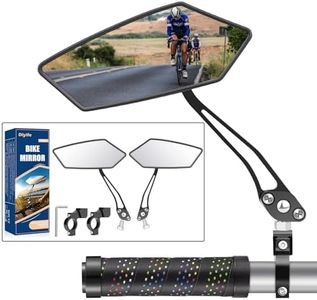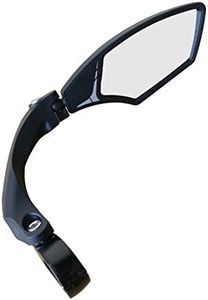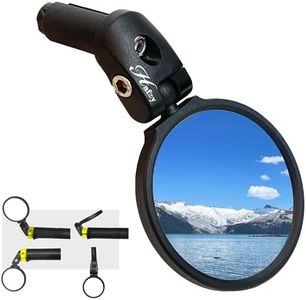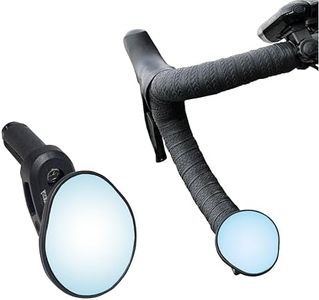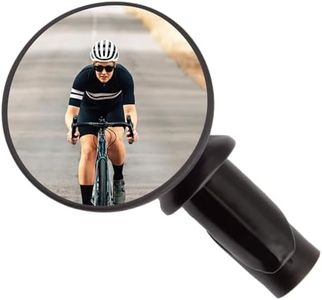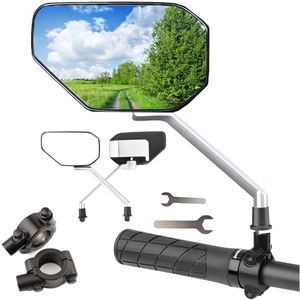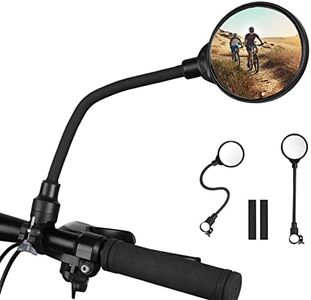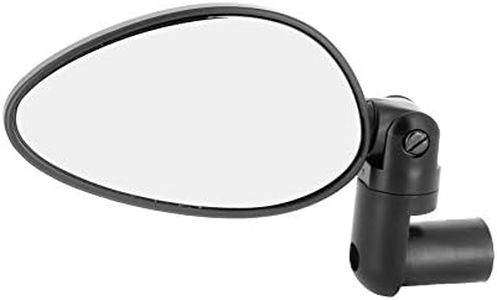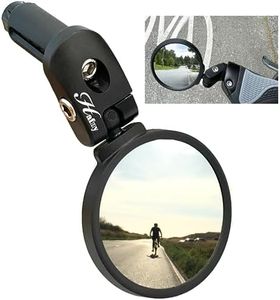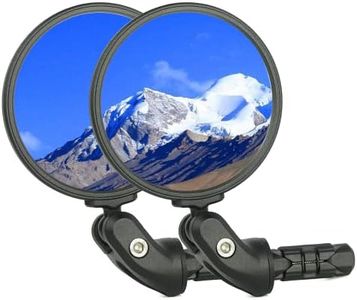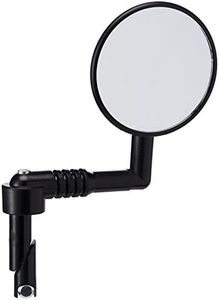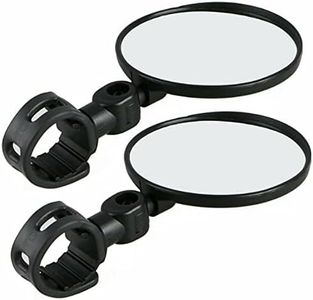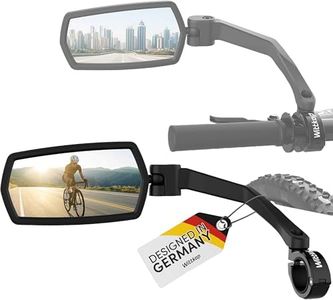We Use CookiesWe use cookies to enhance the security, performance,
functionality and for analytical and promotional activities. By continuing to browse this site you
are agreeing to our privacy policy
10 Best Bicycle Mirrors
From leading brands and best sellers available on the web.By clicking on a link to a third party's website, log data is shared with that third party.
Buying Guide for the Best Bicycle Mirrors
Choosing the right bicycle mirror can make your rides safer and more comfortable by letting you keep an eye on traffic and your surroundings. To pick the best mirror for your bike, it's important to understand the main features and options. Focus on how and where you'll be riding, and select a mirror that matches your needs, your type of bike, and your preferred riding position.Mounting LocationThe mounting location refers to where the mirror attaches to your bike or body. The most common options are handlebar-mounted, bar-end (at the end of the handlebar), or helmet/glasses-mounted mirrors. Handlebar and bar-end mirrors tend to be larger and provide a wider view, making them handy for commuting, touring, or urban riding. Helmet and glasses mirrors are lighter and move with your head, so they're useful if you want a mirror that’s always in your line of sight. Choose based on your comfort, the type of riding you do, and how much of your surroundings you want to see.
Mirror SizeMirror size determines how much you can see behind you. Larger mirrors show a wider view, which is helpful for busy areas or if you want the broadest coverage. Smaller mirrors are lighter, less obtrusive, and create less wind resistance but provide a narrower field of view. If you want maximum awareness for busy roads or city riding, go for a bigger mirror. For minimal distractions or lighter setups, a smaller mirror works well.
AdjustabilityAdjustability describes how easily you can change the mirror’s position and angle. Highly adjustable mirrors let you find the perfect viewing angle quickly, which is important if you share your bike with others or want to tweak it while riding. Some mirrors are fixed or offer limited movement. Adjustable mirrors make sense for riders who move around on the bike, wear different gear, or want to customize their view regularly.
Mirror Type (Flat vs. Convex)The type of mirror affects how the image appears. Flat mirrors show objects at their true size and distance, helping with depth perception but covering less area. Convex mirrors are curved, giving a wider field of view but making objects look smaller and possibly further away. If you prioritize seeing a wide area behind you, pick a convex mirror. If accurate distance judgment is more important, go for a flat one.
Durability and MaterialThe material of the mirror and its housing impacts weight, durability, and resistance to shattering. Common materials include plastic, glass, or acrylic. Glass tends to give clearer images and resists scratches, but may break more easily if dropped. Acrylic or plastic is lighter and shatter-resistant, though it can scratch more easily. If you need your mirror to survive rough treatment or falls, consider more durable or shatterproof options.
Ease of InstallationThis refers to how easy it is to attach or remove the mirror. Some mirrors are tool-free and can be mounted quickly, while others might require screws or tools to install. If you want to switch mirrors between bikes or remove it frequently for storage or transport, choose one with simpler and quicker installation.
